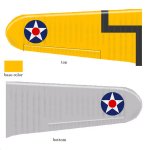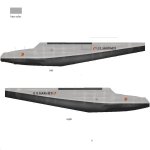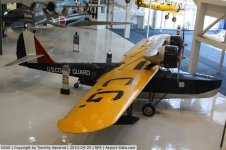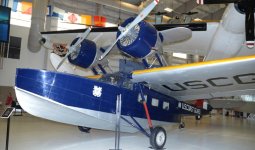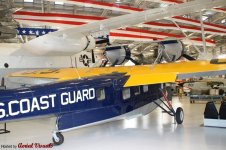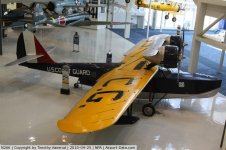Mick
SOH-CM-2025
Well, we have Mickey Mouse, Donald Duck, Bugs Bunny, Woody Woodpecker, Huckleberry Hound, Deputy Dawg, Mighty Mouse, Yogi Bear, and now we have Douglas Dolphin.
Seriously though, David and I, with help from friends Papi Vader and Milton Shupe, have made an FS9 Douglas Dolphin. Well, David made it and I painted it. As the blurb on the download page says:
The Douglas Dolphin was an amphibian of the 1930s. Designed at the end of the 1920s as a luxury air yacht, its market was ruined by the Great Depression and it became mostly a military aircraft. A few Coast Guard Dolphins served into World War Two, but only two survived the war. One flew until 1998 and is now the sole survivor, much modified, on display at the Naval Aviation Museum. This package includes early and later models of the Dolphin and over a dozen authentic skins of U.S. Army, Navy, Coast Guard and civilian Dolphins.
Once again I went overboard wirh the skins, producing no less than eighteen of them depicting the Dolphin in US Coast Guard, Navy and Army service, and as an airliner and an executive transport. I'd have done more if I had adequate documentation for the colors and markings on several others that there are black & white photos of with no color information and/or incomplete views of their markings. As some of you know, I can be compulsive about painting skins.
The Dolphin was produced in a number of variants and we have chosen two representative configurations, and early model with the corrugated tail with triple fins and a later model with the smooth tail and a single fin. The later model has flaps and the early one does not. Both have P&W engines, though some Dolphins had Wrights, so not every plane depicted in the skins has an exact match to one of the models. Most are correct and the others are visually pretty close.
There are standard and wide angle panels to accommodate any monitor.
Here are a couple screen shots of some of the skins:
Seriously though, David and I, with help from friends Papi Vader and Milton Shupe, have made an FS9 Douglas Dolphin. Well, David made it and I painted it. As the blurb on the download page says:
The Douglas Dolphin was an amphibian of the 1930s. Designed at the end of the 1920s as a luxury air yacht, its market was ruined by the Great Depression and it became mostly a military aircraft. A few Coast Guard Dolphins served into World War Two, but only two survived the war. One flew until 1998 and is now the sole survivor, much modified, on display at the Naval Aviation Museum. This package includes early and later models of the Dolphin and over a dozen authentic skins of U.S. Army, Navy, Coast Guard and civilian Dolphins.
Once again I went overboard wirh the skins, producing no less than eighteen of them depicting the Dolphin in US Coast Guard, Navy and Army service, and as an airliner and an executive transport. I'd have done more if I had adequate documentation for the colors and markings on several others that there are black & white photos of with no color information and/or incomplete views of their markings. As some of you know, I can be compulsive about painting skins.
The Dolphin was produced in a number of variants and we have chosen two representative configurations, and early model with the corrugated tail with triple fins and a later model with the smooth tail and a single fin. The later model has flaps and the early one does not. Both have P&W engines, though some Dolphins had Wrights, so not every plane depicted in the skins has an exact match to one of the models. Most are correct and the others are visually pretty close.
There are standard and wide angle panels to accommodate any monitor.
Here are a couple screen shots of some of the skins:
Last edited:





